If you're like me, you probably get a lot of the same type of email over and over again. In this short guide, I’ll show how to use AI to automatically draft replies to common email
1. Set up the Email Received Trigger
First, set up a new email received trigger from either Gmail or Outlook. You can set up filters here if you only want to reply to emails that match certain criteria. To check that your filters are working properly, check the Preview box to make sure the trigger will catch the correct emails.
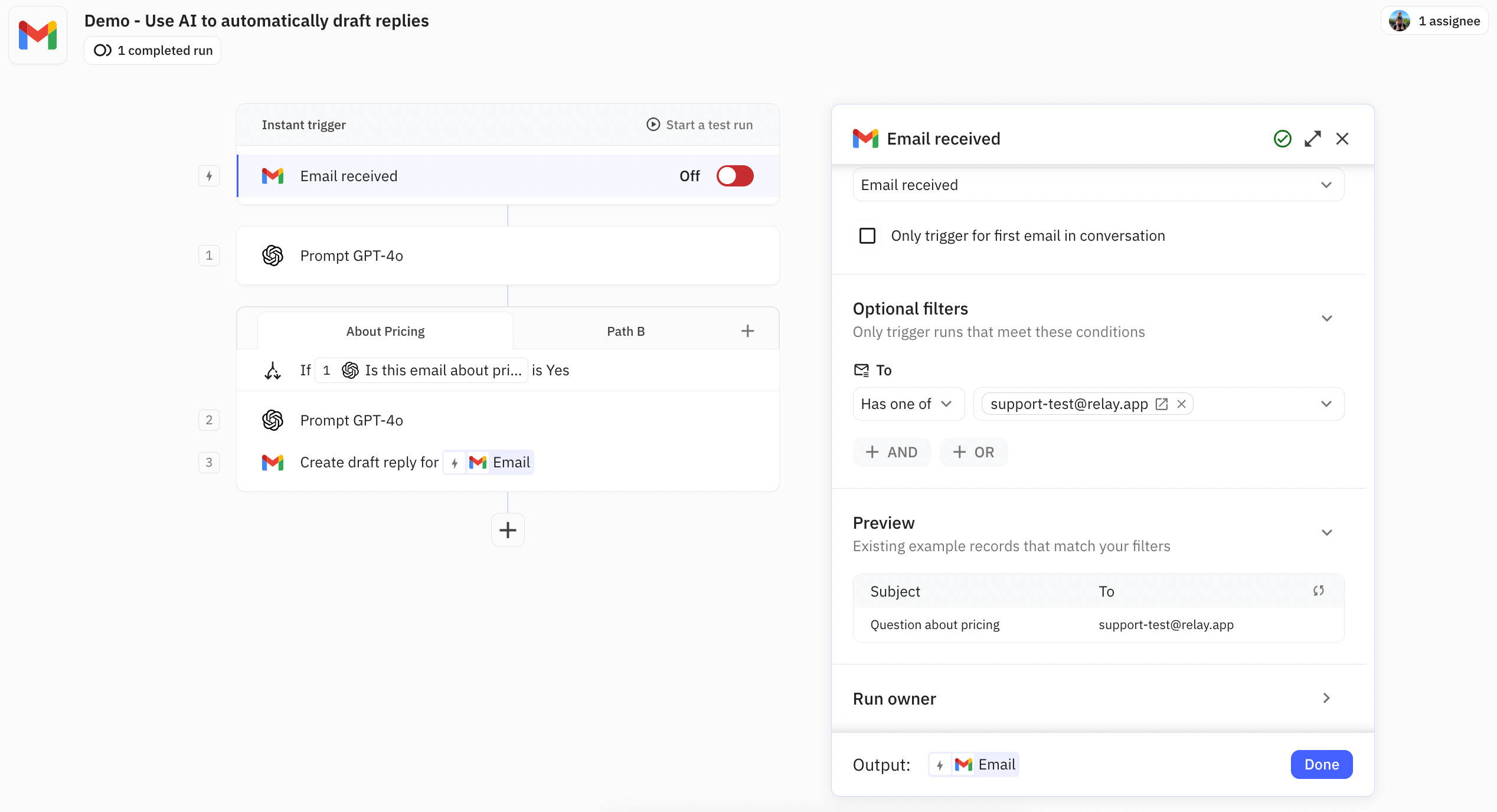
2. Create an AI Step to Determine Whether to Draft a Reply
You probably won’t want AI to draft a reply to every single email, at least not initially. To get started, pick a subset of emails that having common replies. To make sure the AI is only drafting replies to the emails you want, you’ll first need to set up a step to check whether this particular email fits those criteria. To do this, set up an AI step with a “Yes/No” output. In this example, I only want to automatically reply to emails about pricing, so that’s what I’m asking the AI to figure out here.
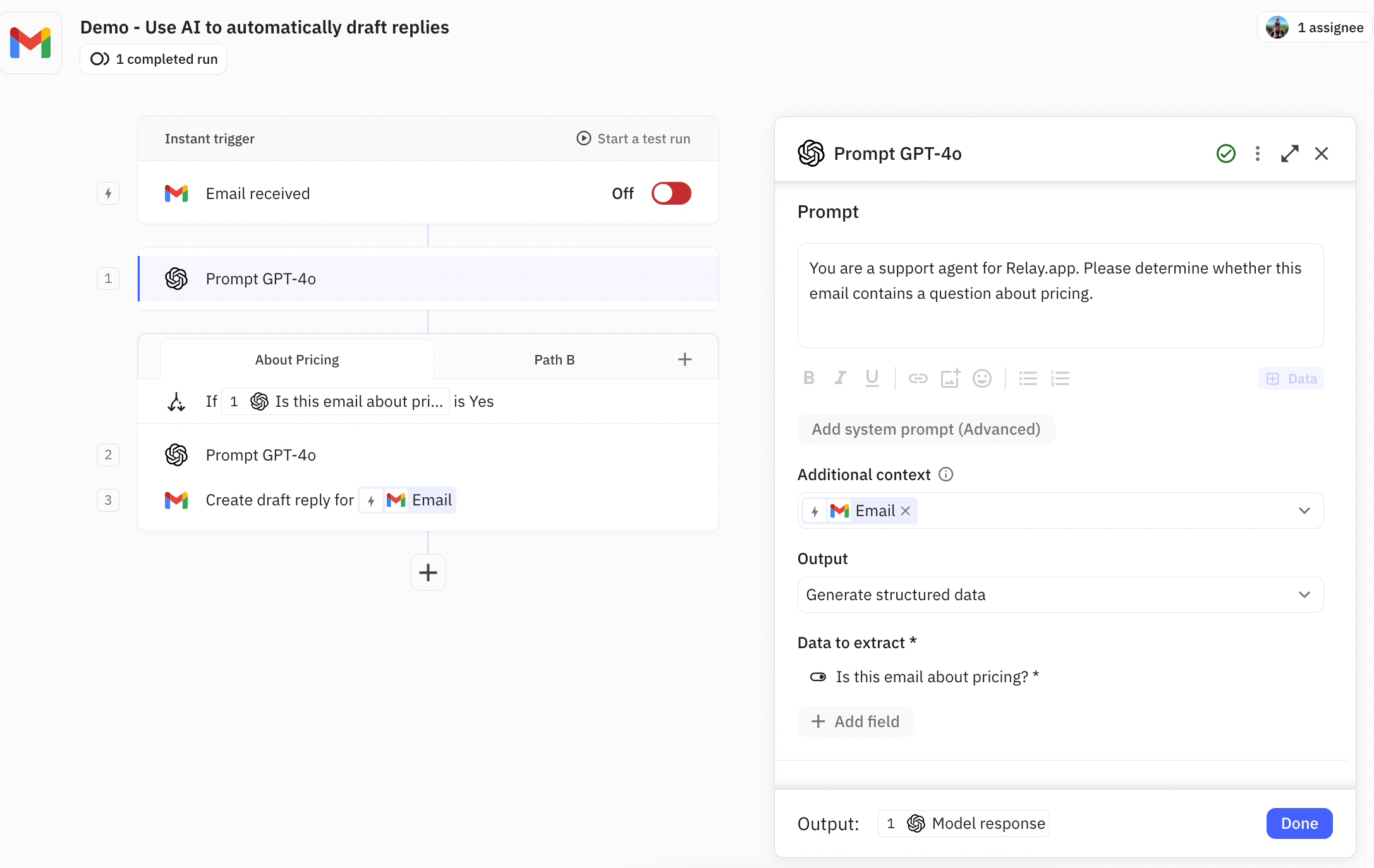
3. Set up a Path Based on the AI Classification
Next, you’ll set up a path to make sure that the email meets the criteria for auto-generating a reply. If it does, proceed to draft a reply. If it doesn’t, do nothing.

4. Create an AI Step to Draft the Reply
Now it’s time to actually draft the reply. Set up a prompt to give the AI guidance about the kind of reply you want, and enable the AI to browse the web and search Google if that’s relevant for this type of email. Here’s an example of a prompt that will work well for responding to emails about pricing.
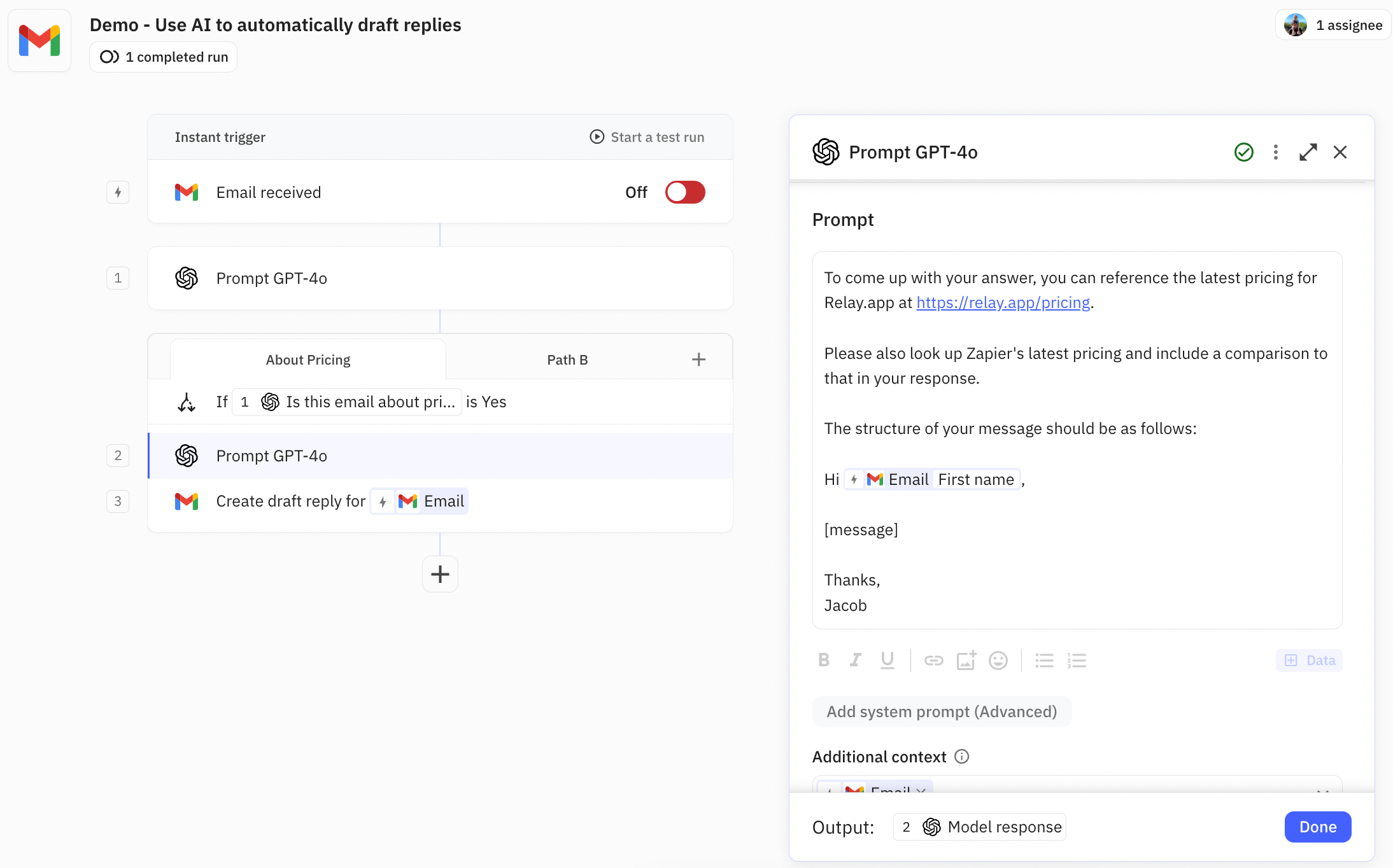
5. Set up the Automation to Create the Draft
Finally, you can set up the step to create the draft reply in your email client with the AI-generated response.
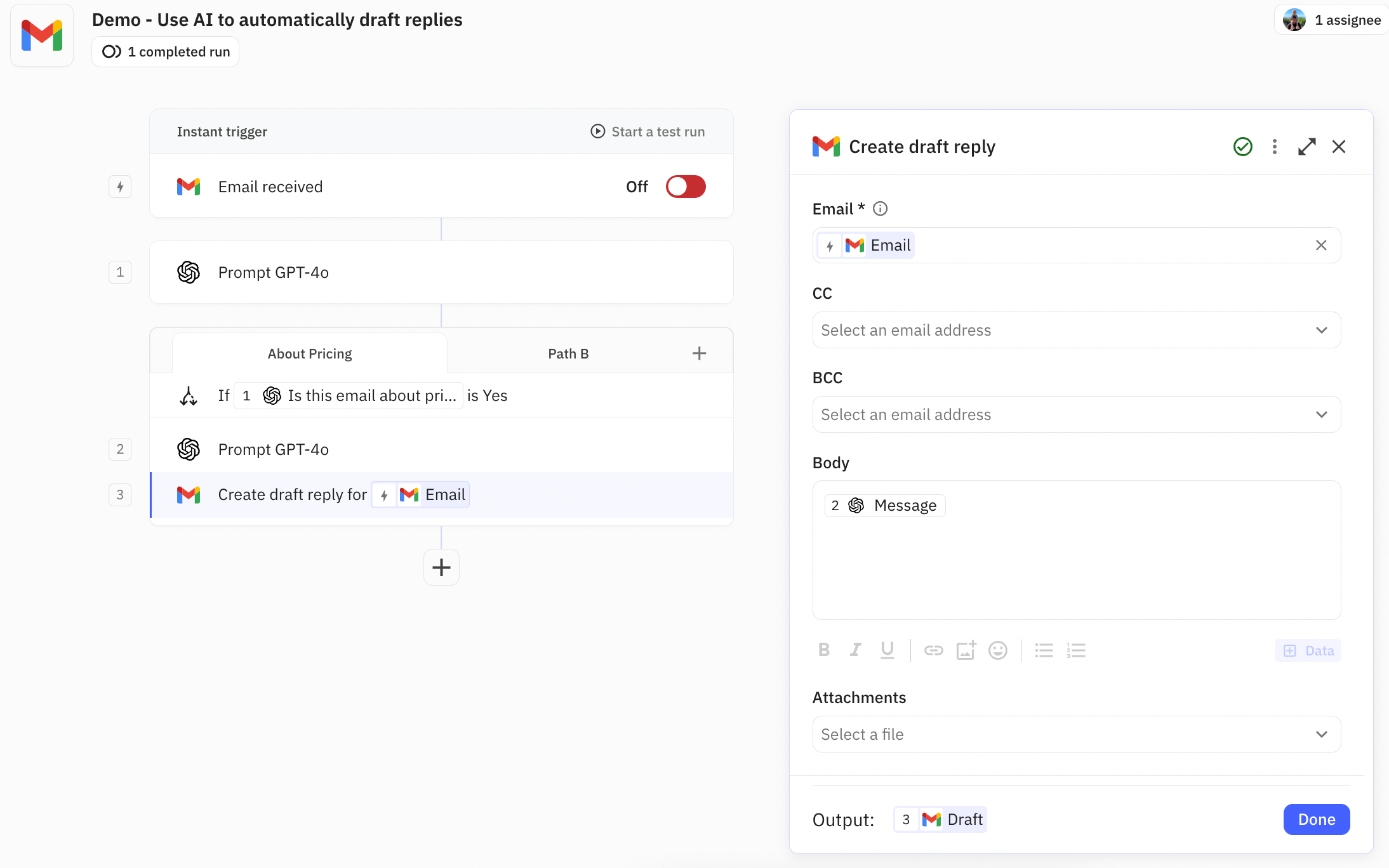
6. Test your Workflow
Now you’re ready to test your workflow with a real email. Select “start a test run” choose an example email, and watch the AI work to draft a reply.
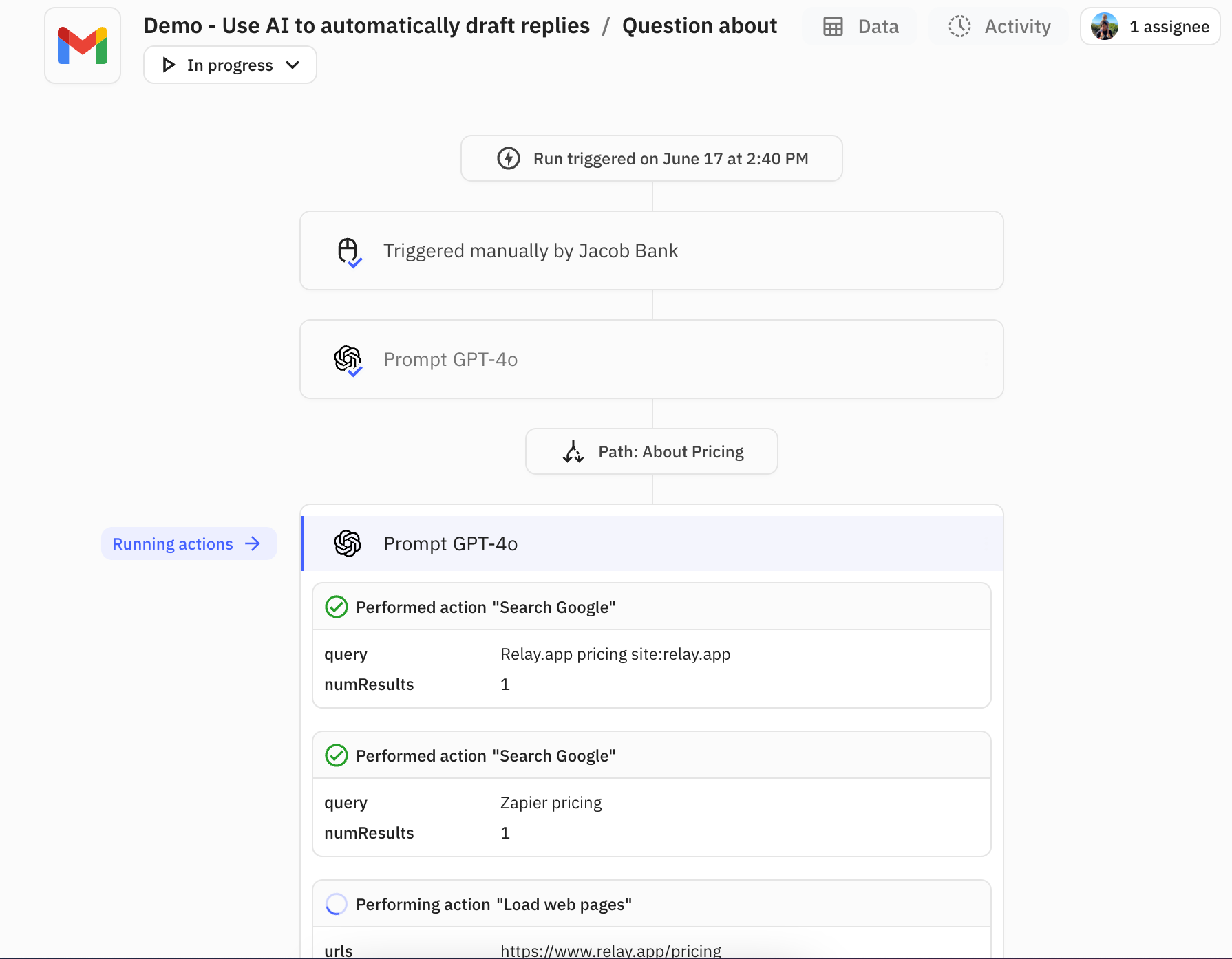
That’s it! Set up your trigger and let AI do the work for you.

